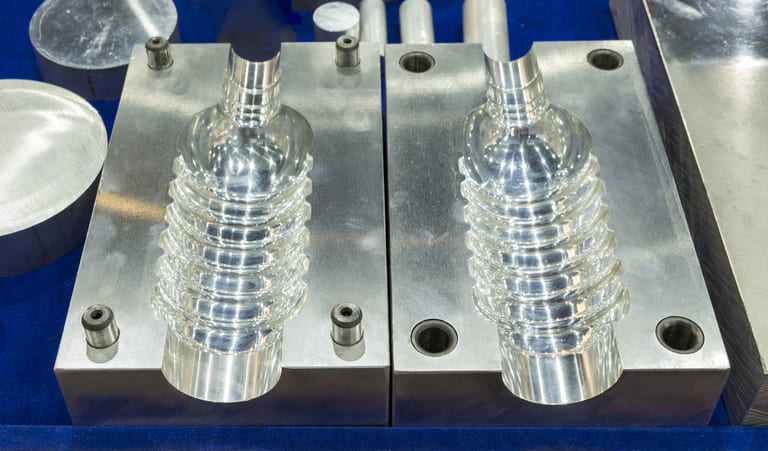Low volume plastic manufacturing is a process that has been growing in popularity in recent years. This is because it offers many advantages over traditional high-volume production methods.
However, there are some things you need to keep in mind if you want to make the most of this process. For example, if your project can use injection molding, it may speed up the manufacturing process. Similarly, rapid injection molding and other low-volume manufacturing methods can be used to create large numbers of plastic parts quickly and efficiently.
Whatever method you choose, it is important to work with a reputable manufacturer who has experience in low-volume production. This will ensure that your project is completed on time and to the highest possible standards.
In this blog post, we will discuss some of the things that could help your low-volume plastic manufacturing project complete faster.
What is Low Volume Plastic Manufacturing?
Low volume plastic manufacturing is the process of creating plastic products in small quantities. This is usually done without investing in tooling or design, and the order is typically for less than 100 units.
Several methods can be used for low-volume plastic manufacturing, including injection molding, 3D printing, rapid injection molding, and vacuum casting. Each of these methods has its advantages and disadvantages, so it's important to choose the right one for your project.
Here's a brief rundown of each of these three methods:
- Injection Molding is a popular method for low-volume plastic manufacturing because it is fast and relatively inexpensive. The biggest disadvantage of injection molding is that it requires specialized equipment, which can be costly.
- 3D Printing offers several advantages over traditional manufacturing methods, including low upfront costs, no tooling requirements, and the ability to create complex shapes. However, part quality can be inconsistent and it can be difficult to achieve high volumes with this method.
- Rapid Injection Molding is similar to injection molding, but it uses lower-cost equipment and molds that can be produced quickly. This makes it an attractive option for low-volume manufacturing.
Which Method Should You Choose For Your Project?
The low volume plastic manufacturing method you choose should be based on the needs of your project.
Low volume plastic injection molding is the fastest and least expensive method, and it is well-suited for large quantities of parts.
3D printing is useful for projects that require complex shapes or a limited number of parts, but it is not well suited for large production runs.
Rapid injection molding is a good option if you need low volumes of high-quality parts quickly and can tolerate some inconsistency in part quality.
For most projects, injection molding is the best option. It is fast and relatively inexpensive, especially for large production runs.
Mold costs are generally cheap as they are easy to machine and customize. In addition, products require minimal investment which helps them get to market more quickly.
Injection molding tools also tend to have a long life, making them ideal for companies that often update their products.
Other benefits of low volume injection molding include:
- Soft aluminum tools are faster and easier to work with
- Durable and functional parts that can be made into multiple variations
- Lower overhead costs per unit
- Shortened lead times
- Flexible designs
- Greater efficiency in part production
- Scalable from prototyping to production

How to Help Low Volume Plastic Manufacturing Projects Move More Quickly
There are a few things you can do to help your low volume plastic manufacturing project move more quickly:
- Use standard parts whenever possible. This will reduce the need for custom tooling and make it easier to find vendors who can produce your parts.
- Work with an experienced injection molder who can help you optimize your design for low volume production. Experienced molders will have a good understanding of the capabilities of different manufacturing methods and can help you choose the best method for your project.
- Use mold flow analysis to ensure that your design is sound before beginning production. This will help avoid costly delays due to design problems.
- Be prepared to make changes to your design as needed. In low volume production, it is often necessary to make design changes after production has begun in order to improve quality or address manufacturing problems.
- Make sure that you have a good understanding of the costs associated with each stage of production. This will help you control costs and make informed decisions about where to allocate your resources.
- Use lean manufacturing techniques to streamline your process and reduce waste. For example, implement just-in-time manufacturing to reduce the amount of inventory you need to keep on hand.
- Use technology to your advantage. Automation can help improve quality and efficiency in low volume production. Work with your suppliers to find the best tech solution for your needs.
- Minimize downtime by having all the necessary tooling and materials on hand before production begins.
Get Started With Low Volume Plastic Manufacturing Today
There are a few key things that can help your low volume plastic manufacturing project complete faster. Utilizing an experienced low volume manufacturer, having all the necessary tooling and materials on hand before production begins, and using statistical process control methods to control process variations.
As a low volume plastic manufacturer, we've seen firsthand how effective these techniques can be in reducing waste and improving efficiency. If you're considering low volume plastic manufacturing for your next project, contact us today to learn more about how we can help you streamline your process.
RCO Engineering is a low volume plastic manufacturer with over 43 years of experience. We can help you streamline your low volume manufacturing process to reduce waste and improve efficiency. Learn more about our injection molding services here.

Comments